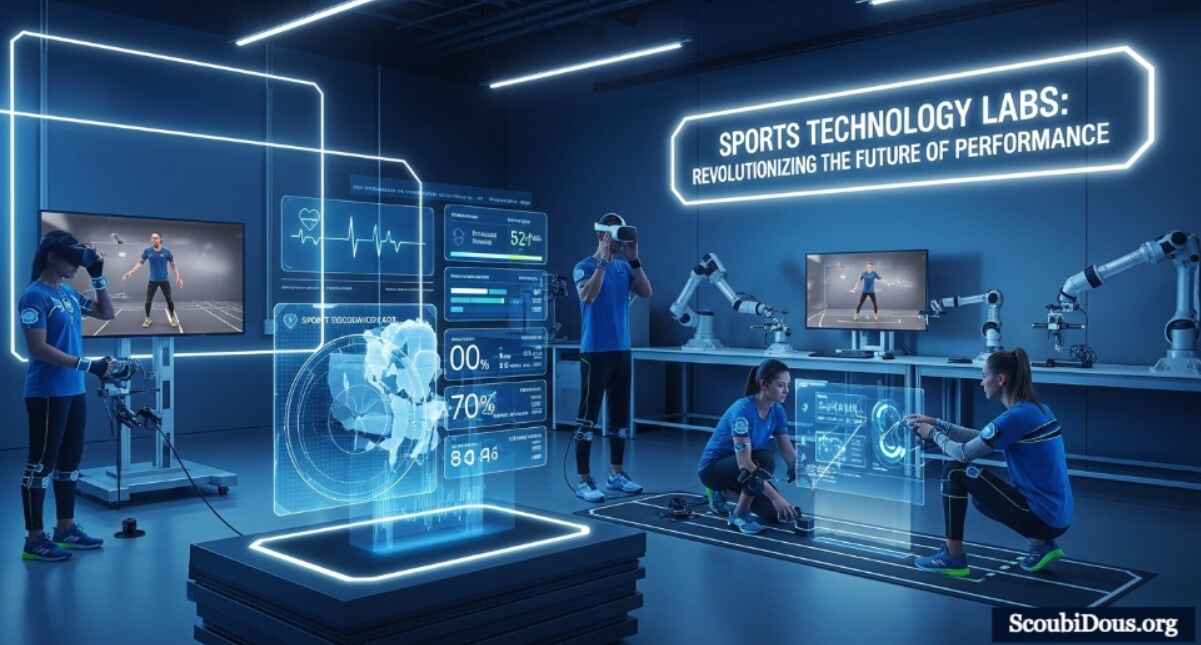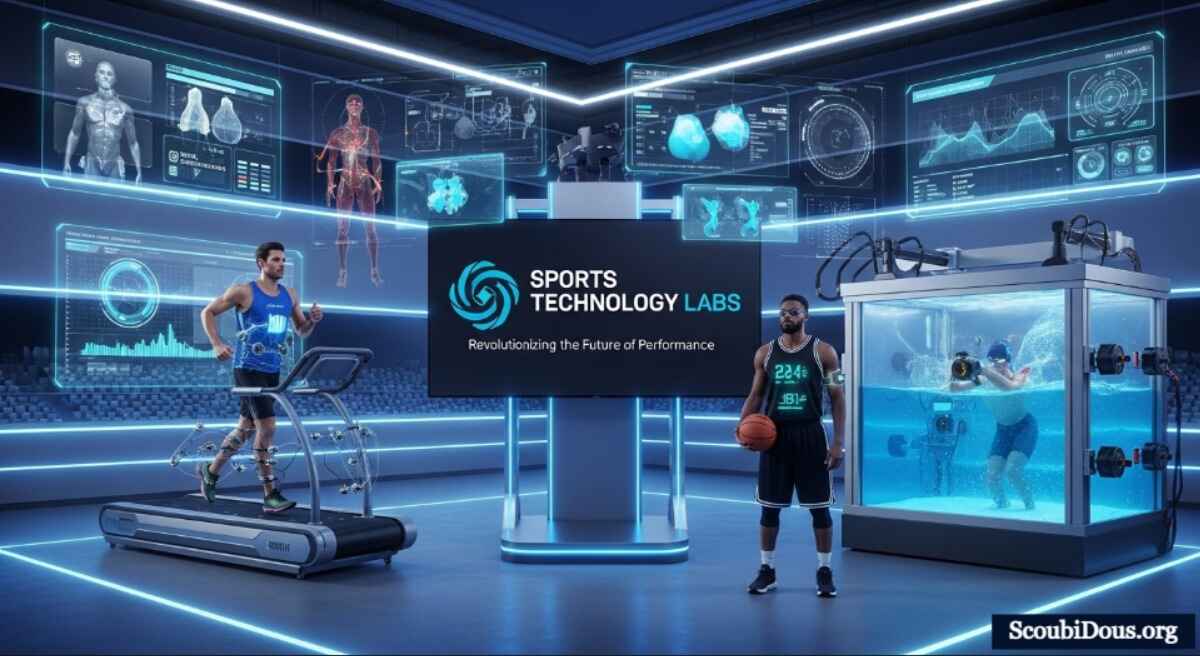Introduction
In today’s fast-paced world of competitive sports, athletes and organizations are constantly seeking new ways to gain an edge.
Traditional training and coaching methods remain valuable, but they are no longer enough on their own. Enter sports technology labs — specialized centers that merge science, data, and innovation to enhance athletic performance, reduce injury risks, and redefine the way sports are played.
These labs combine biomechanics, physiology, data analytics, and cutting-edge wearable devices to provide athletes, coaches, and teams with insights that were once unimaginable.
From motion-capture systems and AI-driven analytics to virtual reality simulations, sports technology labs are shaping the next era of athletic excellence.
What Are Sports Technology Labs?

At their core, sports technology labs are dedicated research and testing facilities designed to study, measure, and improve athletic performance through scientific and technological innovation.
They typically involve a multidisciplinary team, including:
- Sports scientists – analyzing biomechanics, physiology, and psychology
- Engineers – developing advanced wearable devices and motion sensors
- Data analysts – interpreting performance metrics
- Medical professionals – monitoring health, rehabilitation, and recovery
- Coaches and trainers – applying findings to real-world practice
The Role of Sports Technology Labs in Modern Athletics
1. Performance Enhancement
Sports technology labs provide real-time data on speed, endurance, agility, and technique. This enables athletes to:
- Adjust posture and movement for better efficiency
- Track progress with accurate metrics
- Benchmark against elite performance standards
2. Injury Prevention and Rehabilitation
By analyzing body mechanics, labs can detect movement patterns that increase injury risks. Tools like motion-capture cameras and pressure-sensing treadmills help identify stress points. Rehabilitation programs are also customized using biomechanical data, ensuring safe recovery.
3. Data-Driven Coaching
Instead of relying solely on intuition, coaches can now access high-level analytics that reveal strengths, weaknesses, and opportunities for improvement. This allows for tailored training strategies.
4. Sports Equipment Innovation
Labs often collaborate with manufacturers to test and improve gear such as shoes, helmets, rackets, and protective equipment, ensuring safety and performance optimization.
Key Technologies Used in Sports Technology Labs
Biomechanics and Motion Capture
- 3D cameras and sensors track an athlete’s movement in real-time.
- Enables detailed analysis of posture, stride, and muscle use.
Wearable Technology
- Smartwatches, GPS trackers, and performance-monitoring patches.
- Provide data on heart rate, hydration, fatigue, and sleep quality.
Artificial Intelligence and Machine Learning
- Predictive models forecast injury risks and training outcomes.
- AI algorithms analyze large datasets to uncover performance trends.
Virtual and Augmented Reality
- Simulations help athletes visualize and practice scenarios.
- Useful in sports like soccer, basketball, and American football.
Smart Surfaces and Equipment
- Pressure-sensitive floors and treadmills track balance and force.
- Innovative materials optimize athletic gear for peak output.
Real-World Impact of Sports Technology Labs
Elite Olympic Training
Olympic teams across the globe use sports technology labs to test new training strategies. For example, sprinting teams analyze stride frequency and ground contact time to shave off milliseconds — the difference between gold and silver.
Football and Soccer
Professional football clubs use labs to monitor players’ load, recovery, and hydration. Wearables provide real-time alerts to prevent overtraining. Soccer academies also adopt VR training to improve decision-making under pressure.
Basketball and Injury Management
NBA teams rely on motion capture and force plate analysis to track player fatigue and stress levels, reducing the likelihood of knee and ankle injuries.
Benefits of Sports Technology Labs
- Personalized Training – Tailored programs for each athlete’s body and goals.
- Peak Performance – Enhanced strength, agility, and endurance.
- Reduced Injuries – Early detection of harmful patterns.
- Faster Recovery – Data-driven rehabilitation.
- Competitive Edge – Insights that competitors may lack.
- Innovation in Equipment – Improved gear tested under lab conditions.
Challenges and Limitations of Sports Technology Labs
While transformative, sports technology labs also face challenges:
- High Costs – Equipment and expertise are expensive.
- Accessibility – Smaller clubs and developing regions may lack access.
- Data Privacy – Protecting sensitive biometric information is critical.
- Over-Reliance on Technology – Human intuition and coaching remain vital.
The Future of Sports Technology Labs

Looking ahead, sports technology labs are expected to become more accessible and integrated into everyday training. With advancements in AI, nanotechnology, and real-time health monitoring, athletes at all levels may soon benefit from tools once reserved for elite professionals.
Some trends to watch include:
- AI-driven personalized training assistants
- Gene-based performance predictions
- Fully immersive VR training environments
- Advanced recovery systems using biofeedback loops
Conclusion
Sports technology labs are redefining the boundaries of human performance. By merging science, technology, and athletics, they provide actionable insights that enhance training, prevent injuries, and foster innovation in sports equipment.
While challenges like cost and accessibility remain, the long-term benefits far outweigh the hurdles.
In a world where milliseconds and inches decide outcomes, sports technology labs stand at the forefront of a revolution — shaping the future of sports and empowering athletes to achieve their fullest potential.


